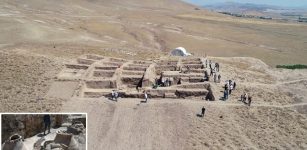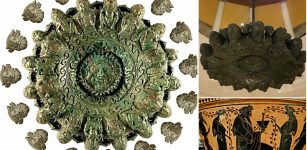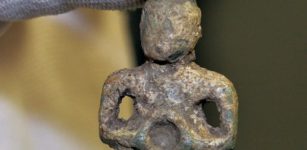Mesopotamian People Liked To Drink Beer Using Variety Of Drinking Vessels
AncientPages.com - Traditionally, it was widely believed that beer in Mesopotamia was consumed communally from large jars using long, bendy straws.
A new research indicates that by 1400 BC beer drinking had become an individual experience using drinking cups and goblets ranging in size from a modern-day equivalent of a small glass of wine up to just over a pint glass of beer.
Beer played an important role in the Mesopotamian diet and it was included in rituals and feasting .
An international team led by Dr Claudia Glatz (University of Glasgow) and Professor Jesse Casana (Dartmouth College, USA) has been carrying out large-scale excavations at Khani Masi since 2016 as part of the Sirwan Regional Project.
Chemical traces of a barley-based fermented drink were discovered in numerous pottery vessels at the Bronze Age Site of Khani Masi located in the Upper Diyala River valley of north-eastern Iraq.
The new research shows that by 1400 BC beer drinking had become an individual experience using drinking cups and goblets ranging in size from a modern-day equivalent of a small glass of wine up to just over a pint glass of beer.
See also:
Oldest Evidence Of Beer Was Found On A Sumerian Tablet In Mesopotamia
Beer Was Used As Medicine And Payment In Ancient Egypt
“Our results present a significant advance in the study of ancient Near Eastern beer brewing and consumption practices," said Dr Claudia Glatz, a Senior Lecturer in Archaeology at the University of Glasgow, in a press release.
“They also provide us with unprecedented new insights into Mesopotamia’s cultural relationships with the Upper Diyala River valley, a strategic communication corridor between Mesopotamia and the Zagros mountains that formed part of the later Silk Roads and that we have only recently begun to explore systematically.”
The Glasgow academics used gas chromatography method, which helped them for the first time, to chemically identify beer in drinking vessels.
“Using gas chromatography we were able to detect and measure a suite of co-occurring fossil compounds that are diagnostic of beer," explained Dr Jaime Toney, a Senior Lecturer in Organic Geochemistry at the University’s School of Geographical and Earth Sciences.
“We show that this suite of fossil compounds match those found in modern barley beer - identifying for the first time an important method for revealing the presence of beer, even when there is no visible evidence such as beerstone*.”
In a new paper, researchers state: “Our analytical results also allow us, for the first time and with confidence, to ascribe a diverse range of drinking equipment to the consumption of beers and in so doing track a significant transformation in Mesopotamian drinking practices.”
MessageToEagle.com






















